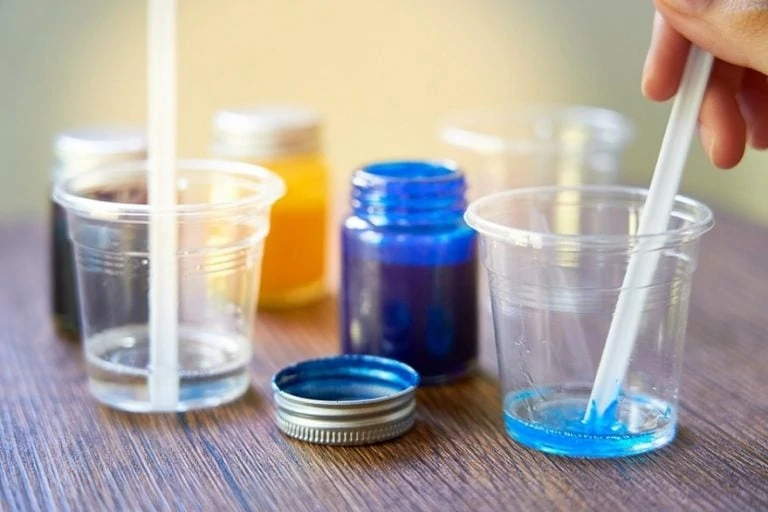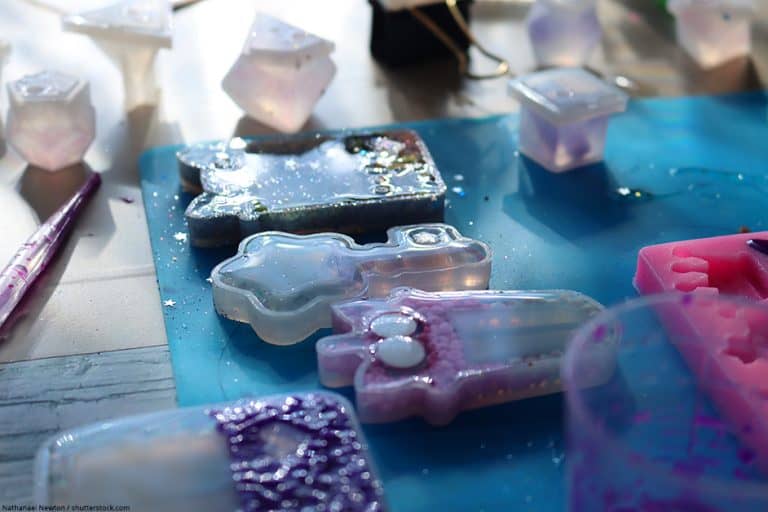Best Silicone Mold Kit – Resin Mold Making Kit Review
This post may contain affiliate links. We may earn a small commission from purchases made through them, at no additional cost to you.
Synthetic materials have become such an integral part of our lives that most of us rarely think about them. Although initially, they had a decidedly bad impact on the environment, we have since adopted more eco-friendly production methods improving their sustainability and toxicity levels. Silicone is one of many such materials, and its uses are virtually limitless in both commercial and regular crafting practices. Silicone can be used as an adhesive, insulator, sealant, and even to create molds for resin casting! Let’s have a look at the latter and how you can use silicone resin to create your own resin molds.
Table of Contents
What Is Silicone Rubber and What Can You Do with It?
This is sort of a big question. It’s a bit like asking what people do with water – there are simply too many variations of its use to run through. Although, hypothetically, if someone who has never seen water before asked you this question, you would likely be able to give them a decent idea, and that’s what we’ll be aiming for here. Silicone was discovered by a gentleman named Jöns Jackob Berzelius back in 1824 when he was messing around with chlorine solutions, and since its discovery, we have found a wide range of uses for the material in all facets of life. Because silicone is flexible, durable, somewhat heat-resistant, is airtight, does not damage surfaces it comes into contact with, and can even be hardened for use with electronics. It has been used, for lack of a better phrase, quite excessively.
 View on Amazon $18.00
View on Amazon $18.00
You can find silicone in your home’s kitchen. Baking trays, cake molds, egg flippers, knife sheaths, turkey basters, food containers, and strainers are all made of silicone rubber. In the automotive and electronics field silicone rubber can be used to create gasket sets, insulation for exposed wiring, seals for oil containers, trim for vehicle exteriors, grips for screwdrivers, and containers for tools.
Silicone rubber can even be found in the clothing industry, many brands use silicone rubber to create 3D prints on t-shirts, aftermarket soles for shoes, pull strings and retainers, hair ties, bracelets, and even hairbrushes.
One of the latest applications silicone rubbers has found a foothold in is the creation of (in both large and small scale) resin molds. These resin molds allow one to create an intricate and often stunning form that can be used for decorative or practical applications. These products are often sold in what has come to be known as a silicone mold kit, these kits provide the materials and instructions necessary to create a negative form of an object which you can then use to replicate said object in the form of a resin casting.This is such an effective way of affordable replication that one might consider it over 3D printing in some instances, even though the latter is far more accurate in regard to the dimensions of the object being replicated. We have also a separate tutorial on how to make silicone molds for resin.
![]()
What Is the Best Silicone Mold Kit?
Silicone mold is a pretty straightforward material as far as crafting supplies go, so why does every silicone mold kit claim to be the best one on the market? Let’s have a look at some of the best products on the market today and see why they claim to be the best silicone mold kit out there while comparing some of their pros and cons.
Best Overall: LET’S RESIN Silicone Mold Making Kit
Let’s Resin is a name that is well known by both new and more experienced crafters around the world, ensuring great quality resin and resin mold products throughout their range. The Let’s Resin team has opted for a formula with a platinum backbone to ensure the quality of the molds produced is strong, flexible, and won’t break after three or four uses. This product does have one thing over the Alumilite team though. Even though both products are virtually odorless and nontoxic the Let’s Resin mold-making kit is clear which means that you can add things like dyes and smaller objects into it without having to consider how visible it will be through the tint.
- The translucent liquid silicone is non-toxic, has no odor, very flexible, soft and clear
- Easy mixing ratio 1:1 by weight, bubble-free formula, ideal for Resin
- The working time of making mold kit is 5 minutes at room temperatur
This kit is easy to use and simply requires a mixing ratio of 1:1, and what’s more, is that this product seems to pride itself on its bubble-free finish which is great if you don’t have a vacuum/pressure chamber on hand. The hardened DIY silicone molds made from this kit are not only sturdy and re-usable, but it is really easy to work with when de-molding due to the flexibility of the mold’s material, which is pretty kid-friendly if you take its non-toxic and food safe characteristics into account.
This product makes its run for the best silicone mold kit on the market today by being a recognizable brand that is easy to use, easy to clean, versatile, virtually unbreakable, and customizable! If you have an intricate object you’d like to replicate or simply want to have some fun with your kids this product will not disappoint, and with a dry time of 5 minutes (and a full set time of 12 hours), you won’t have to wait very long to enjoy your new creations!
PROS
- Easy to use
- Nontoxic
- Quick-dry/set time
- Decent volume per unit
- Easy to clean
- Good for entry-level users
- versatile
CONS
- Not food safe
- Needs to be glazed for a glass finish
Best Silicone Mold Putty: LET’S RESIN Silicone Putty
LET’S RESIN Silicone Putty Mold Making Kit offers a convenient and effective solution for creating custom molds with ease. With its straightforward 1:1 mixing ratio, this kit is user-friendly, making it ideal for both beginners and experienced crafters. The non-toxic formulation ensures safety during use, allowing you to create molds for a variety of applications such as resin casting, soap making, and more. The putty’s quick curing time allows you to start your projects promptly, reducing waiting periods and enhancing productivity.
- Features a simple 1:1 mixing ratio, making it user-friendly and ideal for beginners as well as experienced crafters
- This silicone mold-making kit produces durable, flexible molds that can be reused multiple times
- Made from non-toxic materials, the silicone putty is safe to use
The strong and flexible silicone produced by LET’S RESIN Silicone Putty ensures that your molds are durable and reusable, providing long-lasting performance for multiple projects. The flexibility of the silicone allows for easy demolding, preserving the intricate details of your creations without damage. Whether you’re replicating a favorite object or designing unique pieces, this silicone mold making kit delivers reliable results with minimal effort. Its versatility and high-quality output make it an essential tool for any DIY enthusiast or professional crafter looking to expand their creative possibilities.
PROS
- User-Friendly Mixing Ratio
- Durable and Flexible Molds
- Non-Toxic and Safe
CONS
- Pricey
- Limited Working Time
- Potential for Air Bubbles
Also Recommended: ALUMILITE Amazing Mold Maker
Our top pick for the best silicone mold kit is the one from Alumilite! What makes this arguably the best silicone mold kit on the market today? Well, not only is this mold’s material highly resistant to heat, tearing, abrasion, morphing, and dishwasher safe, but it is also platinum-based to further reinforce quality and longevity for virtually countless uses in the future. This is the best silicone mold kit to have when your project is time-sensitive and you need your mold to be sturdy, but don’t have hours to wait for the material to set before the resin is poured in.
- Make your own molds for resin, food, soap, wax, clay and more with this mold putty
- It is quick, easy and safe, the entire process takes less than twenty-five minutes
- It is food grand and FDA compliant, It requires no equipment, cups or stir sticks
Alumlite’s formula cures into the negative form you have selected inside the 30-minute mark and is ready for use immediately after this. This mold is also extremely versatile and can be used with a number of other substances aside from casting resin due to its robust make-up. Alumilite’s formula is not only fast curing and easy to use, but it is also FDA approved which means it is safe to use with food products without any risk of toxicity of the contents.
This is great if you aim to make some interesting food containers or fun jelly holders for kid’s parties. According to the Alumilite team, this silicone mold resin is also graded for use with things like plaster, concrete, chocolate, soaps, and even candle wax! The Alumilite team does recommend letting the substance cure for 24 hours if you will be using denser (heavier) substances inside the mold to avoid the product breaking or warping.
Not only is mold reasonably priced for its durability and versatility but its two-part formula is easy to use and the molds are easy to clean! Simply pop them in your dishwasher or wash them by hand in some soapy water and you’ll be good to go. This is arguably the best silicone mold kit on the market, with two others coming in at a close second.
PROS
- Strong
- Flexible
- Long-lasting
- Versatile
- Reasonably priced
- Various volumes available
- FDA compliant
CONS
- Might not be usable by entry-level crafters
- No dyes available with the purchase
- Larger volumes can cost significantly more
What Are the Hardness Grades for Silicone Molds?
As we all probably know, silicone can be really hard (like an O-ring) or it can be really soft (Like an inner sole for your shoes) or it could be somewhere in-between (like the covers for your earbuds). This type of variation in hardness is measured in Shore hardness which is simply a scale measurement not unlike PSI (pounds per square inch).
Different silicone mold products will produce molds of varying hardness and depending on your needs or application, you will likely need different harness ratings based on the material you intend on using with your silicone molds. Your resin mold kit can produce a mold with a hardness somewhere on the shore scale between 0 to 90 Shore hardness ratings. How do you determine the level of hardness you need for a given material?
Well, it goes without saying that the denser a material is the heavier it will be and considering how the weight and density will be distributed throughout your mold. This will determine how hard your resin mold will need to be once the casting has cured and hardened in order to prevent the mold from breaking, tearing, or losing its shape retention.
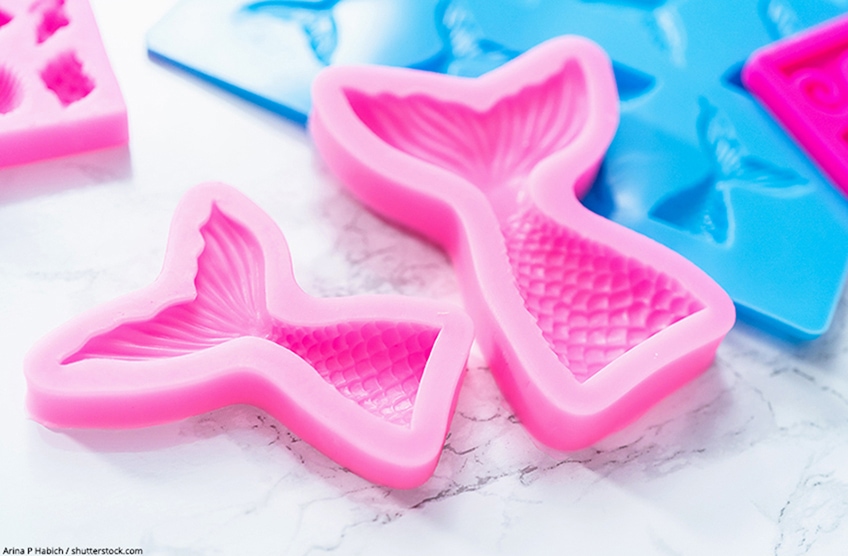
To give you a good idea of what shore hardness you might want your resin mold kit to have, consider that a Shore hardness of 10 would be equivalent to a marshmallow, whereas a shore hardness of 90 would be equivalent to human bone, which has the tensile strength of steel at optimum health. Choosing a hardness that suits your application can be crucial in determining how your casting turns out, so be sure to check the packaging or product description online to determine the product’s final state before you buy.
How Much Heat Can Silicone Rubber Take?
This is an interesting question. You have probably seen silicone being used in a number of applications throughout your daily life, you might not even realize there are objects and machinery around you that use silicone for crucial aspects of the functionality including your laptop and/or smartphone! So, how much heat can silicone rubber take? The answer might surprise you. Silicone rubber molds can, at any degree of hardness, withstand temperatures of up to 302 degrees Fahrenheit for up to 10 000 hours without losing their shape or form.
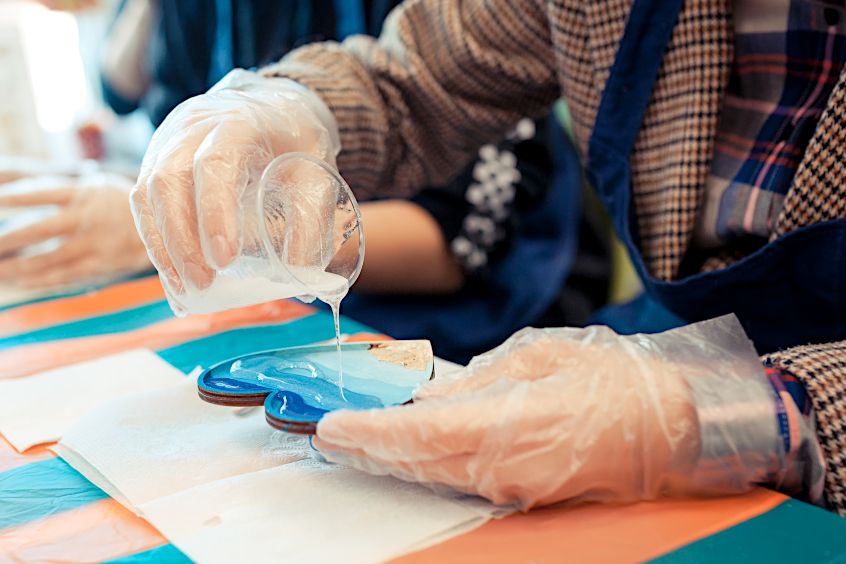
This integrity can vary depending on how the heat is applied and the quality of the silicone rubber used, although the aforementioned is the general consensus among researchers. This is all due to silicone rubber being a poor heat conductor, meaning it is commonly used as a cheap and effective way to insulate things.
Resin mold kits typically use a really good quality silicone rubber material so your mold will likely be able to take quite a bit of heat should you choose to expose it to such forces, although you should be more concerned about the substance you are using for casting. Resin mold kits and the resin you will be used to cast your form will have different grades, and therefore both product limitations should be considered before subjecting them to extreme heat.
How to Use Your Resin to Make a Mold?
Now that you know how to choose which resin is right for you, it’s time for you to learn how to use it! Most resin products will include clear instructions on or inside their packaging, but just in case you aren’t sure what to do, here is the best way to use your resin mold material. Without any further ado let’s get into it!
Prepare Your Casting Material
Most silicone mold-making kits will advise that you combine the two-part resin formula in a bowl of soapy water, but some silicone mold-making kits might have alternative directions so be sure to read the manufacturer’s instructions before moving forward. This is a pretty simple process, simply combine the hardener and the resin in the soapy water, be sure to mix them together well, and form a flat disk form with the mixture.
Once the disk has been formed, compress and decompress the form until it starts getting ever so slightly hard. Once you are sure that you have the consistency that you need, remove the resin from the bowl and prepare the object you wish to replicate.
Place Your Object into the Mold
Okay, now that you have your resin mold material ready, place it on a flat surface. Your mold material should still be in the flat disk shape that you kneaded it into earlier, next place it down on a flat surface and insert the object you wish to replicate into it. This might work with larger irregularly shaped objects, in this case, you might have to cover the object in the mold and allow it to set this way. Regardless, what you should be aiming for in this exercise is to ensure that there are no gaps between the object and mold resin, so get it in nice and tight.
Once you are sure that there are no gaps, that the object is firmly indented in the resin, and that the resin won’t move away from the object in question, move on to the next step in the process.
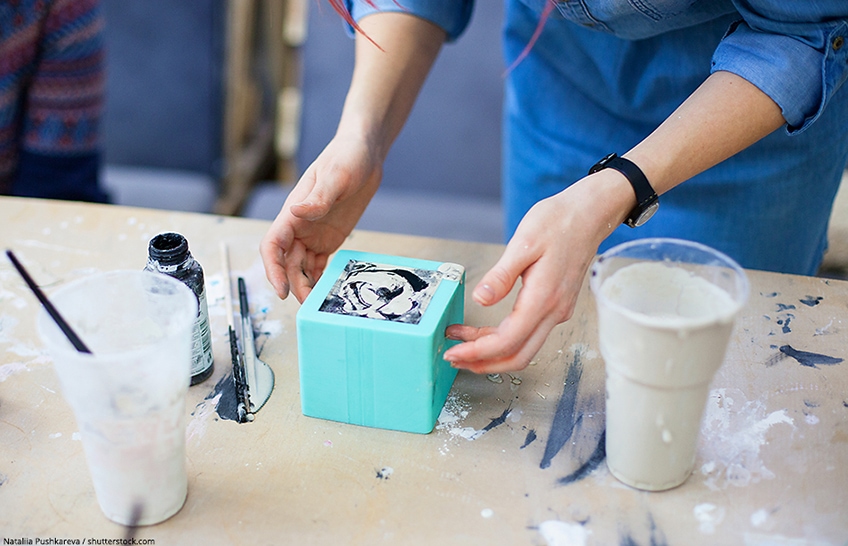
Allow the Resin to Harden and Cure
Any given mold-making kit can differ in the time it takes for the material to harden and cure, therefore as we mentioned previously you should follow the manufacturer’s guidelines when it comes to this stage in the process. Remember that resin will never harden completely, it will take a few hours for the rein to take on a rubbery consistency and lose its slimy texture. Some resins will take four to five hours for this process to be completed and others might take 12, this is why you should always follow the manufacturer’s guidelines to ensure that your mold does not become a squishy mess. Once the allocated time has elapsed ensure that your hands are dry before moving on to the next step in the process.
Remove the Object from the Mold
Remove your object from the mold. This is a crucial step in ensuring that your mold does not break or get damaged, so ensure that you are gentle, and everything should be perfectly fine. Any mold-making kit will essentially say the same thing; do not try to pull the object out of the mold, bent the mold away from the edges of the object, and allow the object to pop out on its own without any prying on your end.
Once your object has been removed and the mold is now free, some manufacturers might include an anti-adhesive spray or gel that you can rub inside the mold before using it, this will ensure that your resin or other casting material does not stick to the interior of the mold. Before you use this, ensure that you wash your newly formed mold out with soapy water and you will be ready to make your first resin casting!
Now that you know what can be made from silicone rubber, how to check what hardness of silicone you might need, what level of heat silicone rubber can withstand, and what the best silicone mold kit is, it’s time for you to go out and put your newfound knowledge to the test. Remember to choose carefully, always work slowly, and most importantly to always have fun.

Frequently Asked Questions
Is Silicone Rubber Toxic?
Silicone rubber is FDA approved which means that it is not toxic, although consuming it is not advised as it could easily cause an obstruction. Not all silicone rubber is food-safe though, so ensure that you know what kind of silicone rubber you are working with.
Can I Use Normal Silicone to Make a Mold?
Silicone rubber, which is rated as being 100% silicone, can indeed be used to make a mold. Silicone rubber is used in some of the best mold-making kits, but it usually works best when creating a negative for small to medium-sized objects. It can become challenging to work with when used to replicate larger objects.
Is Silicone a Rubber or Plastic?
Technically speaking, silicone is closer to being a rubber than plastic. In reality, although silicone resembles a rubber once it has been cured, it is seen as a hybrid between synthetic rubber and synthetic plastic. Silicone’s hardness ranges considerably, so it can be used in either application.
In 2005, Charlene completed her wellness degrees in therapeutic aromatherapy and reflexology at the International School of Reflexology and Meridian Therapy. She worked for a company offering corporate wellness programs for several years before opening her own therapy practice. In 2015, she was asked by a digital marketer friend to join her company as a content creator, and it was here that she discovered her enthusiasm for writing. Since entering the world of content creation, she has gained a lot of experience over the years writing about various topics such as beauty, health, wellness, travel, crafting, and much more. Due to various circumstances, she had to give up her therapy practice and now works as a freelance writer. Since she is a very creative person and as a balance to writing likes to be active in various areas of art and crafts, the activity at acrylgiessen.com is perfect for her to contribute their knowledge and experience in various creative topics.
Learn more about Charlene Lewis and about us.




